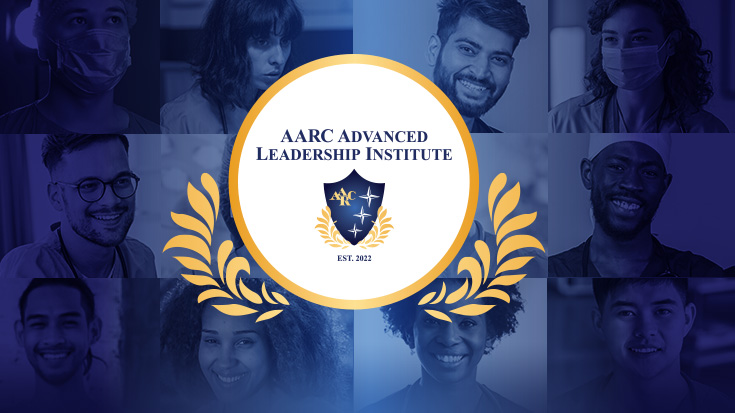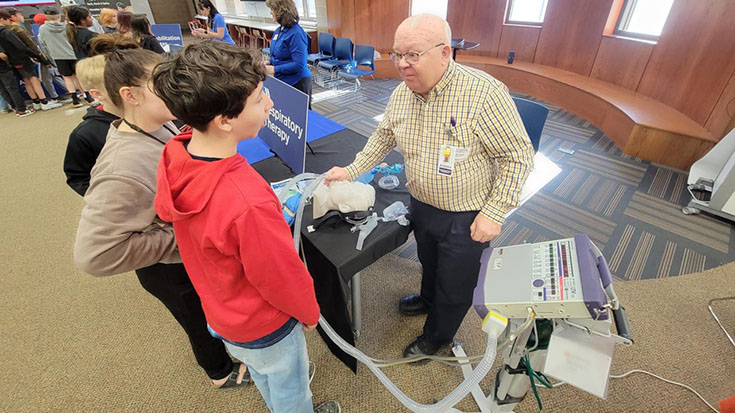
Regardless of the situation, organizations require strong leadership at every level. The impact, magnitude, and rapid onset of the COVID-19 pandemic proved this to be true, especially in the profession of respiratory care. We all had to be agile enough to make decisions at an uncomfortable pace by leveraging all that we know while being mindful of the unknown. Although not apparent at the time, many choices involved complex considerations, even critical ethical pronouncements, and decisions. We were charting unfamiliar territory, making quick decisions with ambiguous information. However, now that we have the advantage of hindsight, it is imperative to reflect on these decisions and generate new plans for a better future. As we all start to reflect on the past year and a half, we instinctively wonder: how do you lead and sustain through a long-term crisis, even a pandemic? When applied correctly , several ingredients of leadership may ease the burden of leading through long-term and even short-term crises. These ingredients are focus, rest, circulate, and communicate.
Focus
Some things are out of your control. Times of crisis will not only test us but will likely set the course of our careers. It is essential to recognize that we don’t need to have all the solutions or even pretend that we do. We simply need to focus on what we can control. Some examples of what we can control include our willingness to stay connected, truth-telling, and offering gratitude and hope. Concentrating on what you can control is the first step in leading and sustaining during a crisis, even a pandemic. When you master the ability to focus on what you can control through the lens of the “big picture” and less on the minutia the return on investment for your efforts will likely magnify.
Rest
Rest produces clarity, humility, and decisiveness. When you have clarity, you will plan and stay in a state of readiness. With a clear mind, you will find simplicity in readiness and adaptability. Rest also helps you better recognize that you are not the only one who can do the job. You will find empathy when recognizing that your team is in pain, even if they say they are not. Finally, when rested, you can act more decisively. You will be quicker to collect relevant information, process it, and then make decisions. In times of crisis, especially long-term crises, such as the COVID-19 pandemic, we need leaders who can act decisively and adapt. Without proper rest, you eventually may lose your ability to act decisively, act with humility and adapt to change with clarity.
Circulate
Leaders need to acknowledge their limits and appreciate that no leader can handle everything themselves. Therefore, it is fundamental that we establish an ecosystem of leadership within our span of control. The concept of circulating leadership ensures all leaders are well-rested. This circulation of leadership does not only apply during a pandemic or long-term crisis, but also perpetually . For example when formal leaders have two to three individuals who can fill in at any given time (i.e., vacation, family/medical leave, training, conferences, etc.), you have circulating leadership. Several months before the COVID-19 pandemic, my team established an acting supervisor and an acting director program. Each supervisor identified two to three respiratory therapists to be acting supervisors in their absence. This process provides assurance that, in the absence of the formal supervisor, the acting supervisor will handle any responsibilities to the expected standards. Likewise, when the director is absent, it triggers both the acting supervisor and the acting director program. One supervisor will serve as acting director, and an acting supervisor will fill the role of the supervisor appointed to acting director. Although this model is not perfect, it offers more assurance to the leadership team than without this model. This concept of a circulating leadership team also creates a sustainable succession plan and eases the anxieties that come with leadership vacancies.
Communicate
Always be gracious and transparent. Remember the delivered message is not always received as intended. Early in my career, I learned that every important communication should be communicated five times and in five different ways. This gem of a statement still resonates with me today, especially with critical information. In-person communication is a must-have because talking better expresses empathy than writing to create a connection. Therefore, email communications should only be used as a secondary enforcer of critical information. The advantage of talking versus writing is the ability to express empathy and to create a connection. When communicating it is important to be honest, promote hope, and be flexible. Honesty builds trust and promotes rapport. People typically can handle hope, but not hopelessness, especially from their leader. Leaders need to be flexible in the way they communicate as well as the cadence of their communications. During a crisis being an agile communicator to meet the current needs is essential. As leaders, we need to acknowledge people and recognize that their unique situations may require personalized care.
If you don’t do it, there’s a good chance nobody else will. I keep this mantra close to my heart. As leaders in our current day, we may never face events like the COVID-19 pandemic; however, the people we serve have not changed. To ease the burden of leading through long and short-term crises, leaders need to have the right ingredients. To sustain this ability, leaders need to apply these ingredients correctly and consistently. Remaining focused, rested, circulating, and communicating are imperative to successfully leading through a long-term crisis, even a pandemic.
Email newsroom@aarc.org with questions or comments, we’d love to hear from you.















